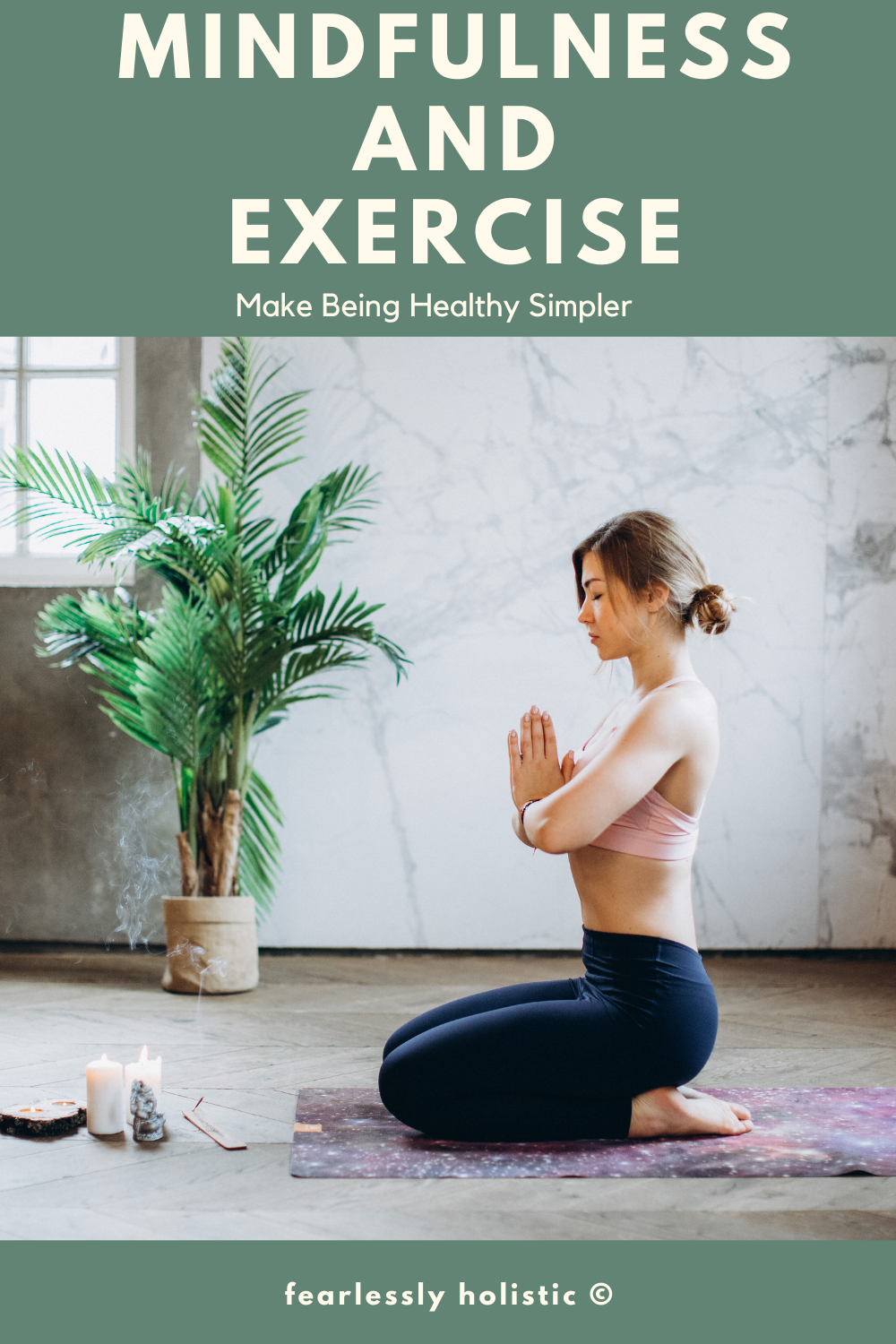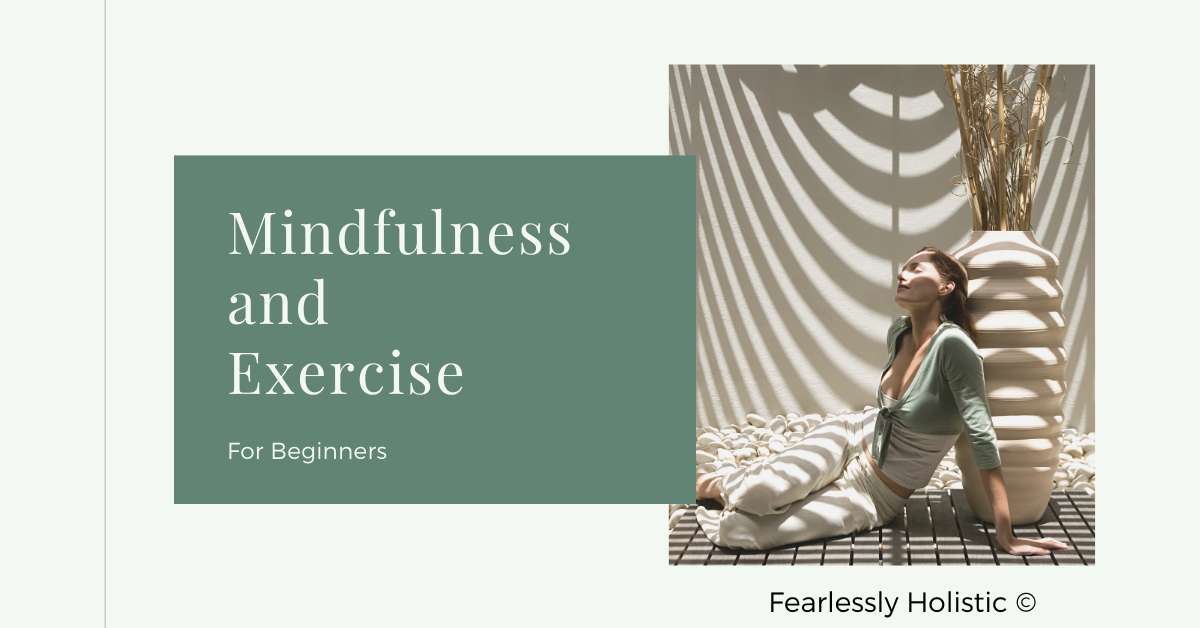How do mindfulness and exercise go together? Actually, very well.
Mindfulness is the perfect companion for your exercise routine, because you will do what is right for your body.
A common question people have when they start living a more intuitive life, not just with eating but with movement as well, is how can they focus on their health? Does being intuitive mean you no longer have health goals?
The short answer is No, definitely not! But here are some things to keep in mind.

Hello and welcome to Fearlessly Holistic.
My name is Irma and I want to share my journey to improved health by eating whole foods, moving my body and eliminating stress as much as possible.
It is my hope to inspire you to make daily changes. Why? Because eating fresh, seasonal food, getting some sunshine, and purging unhelpful thinking is the best way to increase longevity. But you do not want just a long life.
You want a quality long life.
My blog posts are my opinion and the results of things that I have tried that either worked for me or didn’t. My opinions are for informational purposes only and are not intended as medical advice. Medical advice should always be obtained from a qualified medical professional for any health conditions or symptoms associated with them. As well, there may be affiliate links in this post. Read more here.
Health Goals and Mindfulness…Questions To Ask Yourself
Last week we talked about how intuition fits in with an exercise routine. Exercising intuitively means that you are doing for your body what it wants you to do.
Instead of doing what “the experts” tell you to do, like 60 minutes of cardio 5 times a week, you do you.
And who hasn’t been waiting for someone to give them permission to do that? Hands up?
So many people do not even know that they are free to do whatever they want. I mean if the evening news says that this is the year to max your cardio, you know that you will be considering that above all else.
As far as goal setting and your health…you really need to be on top of your options. It may take some research to find the right exercise for you and your body.

What Is Your Motivation?
When you are on a journey to be intuitive, but you also want to set some health goals, the most important thing to do first is to know why you want these goals.
You have to be really honest with yourself.
If you know that to be intuitive means you don’t worry about weight loss or body goals anymore, but you believe that deep in your heart, these goals are to help you lose weight, it’s not going to help you at all.
Make a list of WHY you want to set your health goals first, and if any of them don’t feel like they are for your health only, you might want to rethink them.
You should only work on improving your health for yourself. You have to live in your body; no one else does.
Potential “whys” are:
- Improve overall health
- Tone up your body
- Lessen or eliminate specific health issues
- Lose weight
- Sleep better
How is “Health” Defined in Your Opinion?
When you think about “health” goals, what exactly does health mean to you? What categories are you considering?
This is another important thing to consider when it comes to setting health goals with your exercise and other lifestyle changes.
What one person defines as great health another person may define as so-so or not enough.
Is health just about how you feel, does it involve nutrients, different forms of exercise?
Try to write down your definition of health and what would make you feel like you are taking your health seriously.
What Healthy Habits Do You Already Have And What Habits Can You Realistically Add?
For proper health goals that are still aligned with your intuitive lifestyle, consider more of the habits you can incorporate into your daily life. Improving health should not have to carve out huge chunks of your day – driving to a gym, finding parking, racing to get home and prepare a meal.
You are looking for several items that you can work with on any given day; a little change in your diet here, a bit of walking in the evening there.
Simple things that make the changes do-able.
With little habits, it is easier to make changes you will stick to, but it also encourages you to think more about health and wellness, and not trying to change your body or have restrictions in your life.
This is also going to help you make gradual changes to your exercise routine that don’t feel forced.
Goals Without Restrictions
Make sure your goals have nothing to do with adding restrictions into your life.
It is so easy to tell yourself you won’t have dairy because of your digestive system, when you know you’re just trying to change your diet for other reasons.
The more honest you are with yourself when setting goals and the purpose behind them, the easier it is to avoid unnecessary restrictions.
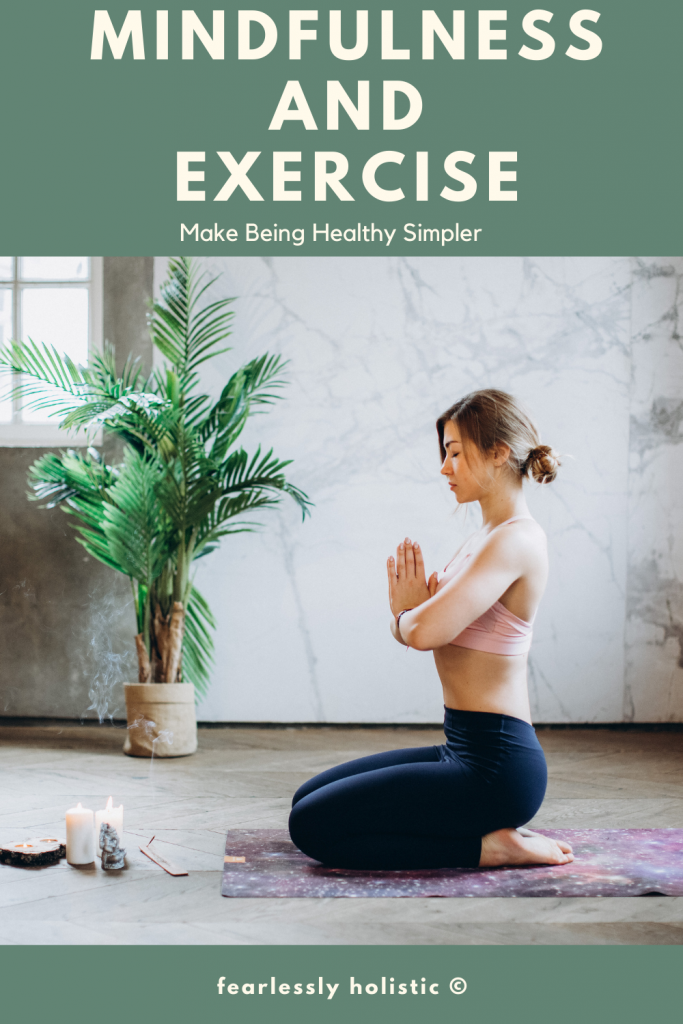
Being Mindful + New Exercises = Healthy
Being more intuitive with your fitness and paying attention to your body leaves a lot more room for trying new things. Instead of just sticking with a strict fitness program that consists of workouts you don’t enjoy, why not try new things?
Here are some reasons why this can be a great option for you.

You Can Find New Forms of Movement You Enjoy
The first benefit of trying out new exercises is of course to find new forms of movement that you enjoy. This might surprise you and let you see certain forms of movement you never even considered before.
Have you ever told yourself you’re “just not into yoga” or you “can’t do power lifting?”. Just because this is your assumption, whether based on past experiences or not, doesn’t make it true now.
It may be worth your while to start researching different fitness programs where you live.
See if they have a free introductory session for you to check out if it is something new to you. You may find that you like indoor climbing or hot yoga.
As you explore your options, more things might inspire and motivate you, and your interests with different forms of exercise might change drastically. But you never know until you try!
Go to that fitness class, try that home workout, go for that run. You might be surprised by the forms of movement that your body now loves to do.
It Further Instills Trust in Your Body
Another great reason to experiment with your workouts and different types of exercise is to show that you fully trust your body.
You trust your body to tell you what it wants from you, what it enjoys, and what forms of movement are going to give you energy and make you feel happy.
Trusting your body is a long process and won’t happen overnight.
While it is an important part of being more intuitive, it is also one of the more difficult ones. Especially if you are coming from a past of dieting, restricting, and forcing workouts.
But the more you experiment, the more you understand how smart your body actually is.
You Learn More Cues From Your Body
You will also notice more about your body, how it moves, and what feels like by trying new things.
Maybe cycling wasn’t really for you in a group class because it was a bit too intense for you, but you noticed that the bike itself was enjoyable.
This might mean you would prefer to head outside to explore the city with your own bicycle. You just listened to your body and learned something new about yourself.
How to Use Mindfulness for Intuitive Exercise
Mindfulness sounds overly complicated, but it is nothing more than focusing your attention on what you are currently going through.
It doesn’t matter if you are eating a meal, going for a walk, or reading a book, you just want to be in the moment and be in a mindful state.
This is helpful in nearly every area of your life, but especially if you are working on developing a healthier relationship with your body, and want to start working on intuitive exercise.
How Does Mindfulness Work?
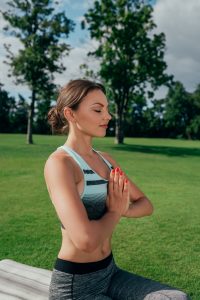
Mindfulness is a state of self-awareness to put it simply.
When you are being mindful, you are not distracted by other things, but instead focusing on the one thing you are doing, such as participating in your exercise of choice.
Essentially your are in the “now”.
There are a wide range of benefits to practicing mindfulness with your intuitive exercise, from deciding what type of workout to do each day, to understanding when it is time to stop because your body is no longer feeling good about it.
Connect With Your Body Using Mindfulness Techniques
Mindfulness not only helps you connect with your body during your workouts, but when you are deciding what type of exercise would be best for your body.
This is a big part of exercising and living intuitively; getting to know your body and what it needs.
I remember when I wanted to try a new exercise routine and I settled on jogging.
The first thing I did was to buy new shoes. Then I set up my phone with awesome tunes, and then I planned my route.
I tried so hard to like it because of the supposed health benefits and I gave it a six-week trial. What I discovered was that I did not enjoy it, so I stopped.
That is basic mindfulness in a nutshell.
In the beginning, it might not feel much different, but over time, you understand so much more about your own needs.
You will know when your body wants yoga or to go for a walk, the signs you get for getting stronger with weight training, and how to know when something is good for you, and when you really are just not enjoying it anymore.
Notice When changes Need to Be Made
Another way mindfulness is going to help with your intuitive exercise journey is by helping you understand when it is time to make changes to your workout routine.
It can be easy to just get used to a certain routine, and not think much about it.
But with mindfulness, you are much more in tune with your body and your mindset, so you know when changes should be made to your routine.
Find More Satisfaction From Your Exercise Journey
Do you not only want to exercise because it’s good for your health, but for your energy and happiness?
To feel that joy and satisfaction from moving your body, you need mindfulness to help you truly appreciate how it makes your body feel.
Things To Not Do When Mindfully Exercising
So, you have decided to give up all those fitness rules and goals, and instead incorporate intuitive exercise into your life.
But, it can be a little bit of a shock when you realize how much is going to change, especially if you are used to having a schedule and routine for your fitness goals.
Here are some things you will be free from when you exercise intuitively.
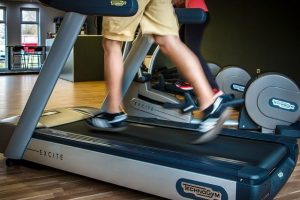
A Rigid Workout Schedule
Workout routines based on doing some form of movement for a certain period of time is totally fine with intuitive exercise.
However, forcing yourself to burn a certain number of calories, doing extreme fitness challenges, or trying to exercise for 2 hours every day is no longer a part of your life with intuitive exercise.
Get rid of all those printed workout schedules you have, because this isn’t going to be a part of your health journey anymore.
Exercise When You Don’t Feel Like it
You should also no longer be exercising when you really don’t feel like it.
This might be because you aren’t feeling well, ran out of time, or have sore muscles.
Listen to your body and let it decide when it is time for a workout.
Were you planning on doing yoga in the morning before getting ready for work, but woke up with a terrible headache? That is a sign that you should rest, not that you power through and do yoga anyway.
Unless your body is telling you it is good for you, you don’t exercise when it is painful, uncomfortable, or just sounds like a miserable thing to be doing at that moment.
Trying to Change Your Body with Exercise
This doesn’t mean your body isn’t going to change. In all likelihood, with regular exercise, you will become stronger and healthier.
Your body even might become a little smaller.
But this can’t be the goal, just like trying to lose weight can’t be the goal with intuitive eating.
You will gradually shift your mindset from exercising to change how your body looks, to using it to change how your body feels.
Using Exercise as Punishment
Lastly, you will no longer be using exercise as punishment or a way to make up for something you ate.
If you used to indulge yourself in dessert, then force yourself to run on the treadmill before bed, that is definitely not going to be in your lifestyle anymore.
Tips for Sticking with Intuitive Movement
It might seem easy to give up rigid fitness rules and “body goals”, but it is often harder than just having a regular workout program.
Intuitive movement is so much about listening to your body, and trying to put aside any physique goals you might have had before.
Try these tips to help you stick to your new way of moving.
Keep a Journal of Exercises
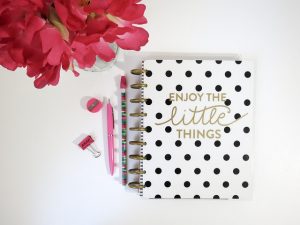
If you are just starting out with intuitive movement, you might feel that itch to write down what you are doing. This is actually a great idea, but you aren’t going to write down calories burned.
Instead, write in a journal about the exercise you did, and whether you loved or hated it.
You can start a journal that becomes a list of exercises to do, and others to avoid.
Every time you try a new exercise, or discover something new about a workout, write it down in your journal.
Related Post: Journaling for Beginners
Write down as many details as you can, including the type of exercise, the environment (like in a gym or outside), who you did the exercise with, the duration, and how you felt afterward.
Write down if you had fun or enjoyed your time; If you didn’t like it, write that down too.
Learn How to do a Body Scan
We talked about this in last weeks post, and this is a really important skill to learn when it comes to intuitive exercise.
A body scan simply means you go through each part of your body, pay attention to how it feels, and see if you notice any inclinations to move that part of your body.
It is much easier to stick to your journey of intuitive movement when you can listen to your body’s cues.
This is best done with a full body scan, where you mentally visualize and feel each part of your body, one at a time.
This can help you get in tune with your body and learn what exercises will feel good at any given time.
Keep Your Workout Routine Open
With intuitive movement, you don’t have strict challenges or competitions, and your workout routine should always be open for adjustments based on how you feel.
If you try to do challenges or restrictive routines, the intuitive aspect will go out the window.
It is okay to have a general schedule for your routine, but be open to making changes in order to maintain the intuitive nature of your exercise journey.
Conclusion
Being more intuitive means that you learn to trust what your body and mind are telling you or encouraging you to do. This skill is worth trying in your own life, as it comes in handy for job searching, or just picking a destination for a road trip.
I have been practicing tapping into my intuition for about a year now and I have found that not only is my life more interesting, but I also enjoy life more. If you are serious about being more intuitive, consider doing more self-care practices to help strengthen your intuition in all areas of your life.
I know that I feel calmer and more centered when I do more self-care and journal, as well as eating a Keto diet.
Holistic approaches never just address symptoms of specific health problems, but instead aim to return or keep the patient in a state of balanced health between mind, body, and spirit. Holism targets overall wellness, and when we are well, we only get better with age.
Please share this post with anyone who can benefit from it. Sharing is caring!
And follow me on Pinterest!
Until next time, here’s to our health!
-Irma
